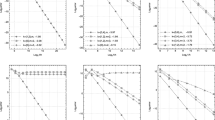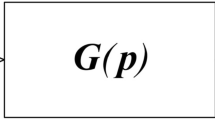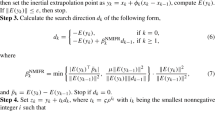Abstract
This paper deals with the design of linear-phase finite impulse response (FIR) digital filters using weighted peak-constrained least-squares (PCLS) optimization. The PCLS error design problem is formulated as a quadratically constrained quadratic semi-infinite programming problem. An exchange algorithm with a new exchange rule is proposed to solve the problem. The algorithm provides the approximate optimal solution after a finite number of iterations. In particular, the subproblem solved at each iteration is a quadratically constrained quadratic programming. We can rewrite it as a conic optimization problem solvable in polynomial time. For illustration, numerical examples are solved using the proposed algorithm.
Similar content being viewed by others
References
Adams, J.W.: FIR digital filters with least-squares stopbands subject to peak-gain constraints. IEEE Trans. Circuits Syst. 39, 376–388 (1991)
Adams, J.W., Sullivan, J.L.: Peak-constrained least squares optimization. IEEE Trans. Signal Process. 46, 306–321 (1998)
Bertsekas, D.P., Nedić, A., Ozdaglar, A.E.: Convex Analysis and Optimization. Athena Scientific, Nashua (2003)
Dam, H.H., Teo, K.L., Nordebo, S., Cantoni, A.: The dual parameterization approach to optimal least square FIR filter design subject to maximum error constraints. IEEE Trans. Signal Process. 48, 2314–2320 (2000)
Hager, W.W., Presler, D.L.: Dual techniques for minimax. SIAM J. Control Optim. 25, 660–685 (1987)
Lobo, M.S., Vandenberghe, L., Boyd, S., Lebret, H.: Applications of second-order cone programming. Linear Algebra Appl. 284, 193–228 (1998)
Xu, X.H., Nowrouzian, B.: Design of FIR digital filters using weighted peak-constrained least-squares optimization. In: Proceeding of the 1999 IEEE Canadian Conference on Electrical and Computer Engineering Shaw Conference Center, Edmonton, Alberta, Canada, May 9–12, pp. 805–810 (1999)
Parks, T.W., Burrus, C.S.: Digital Filter Design. Wiley, New York (1987)
Sturm, J.F.: Using SDuMi 1.02, a MATLAB toolbox for optimization over symmetric cones. Optim. Methods Softw. 11, 625–653 (1999)
Teo, K.L., Yang, X.Q., Jennings, L.S.: Computational discretization algorithms for functional inequality constrained optimization. Ann. Oper. Res. 98, 215–234 (2000)
Wu, S.-Y., Fang, S.C., Lin, C.J.: Relaxed cutting plane method for solving semi-infinite programming problems. J. Optim. Theory Appl. 99, 759–779 (1998)
Author information
Authors and Affiliations
Corresponding author
Additional information
This paper is dedicated to Professor Liqun Qi on the occasion of his 65th birthday.
The first author’s work was supported by NSFC grant (Nos. 10871113, 10801087).
Rights and permissions
About this article
Cite this article
Zhang, L., Wu, SY. A new approach to the weighted peak-constrained least-square error FIR digital filter optimal design problem. Comput Optim Appl 50, 445–461 (2011). https://doi.org/10.1007/s10589-010-9385-8
Received:
Published:
Issue Date:
DOI: https://doi.org/10.1007/s10589-010-9385-8




